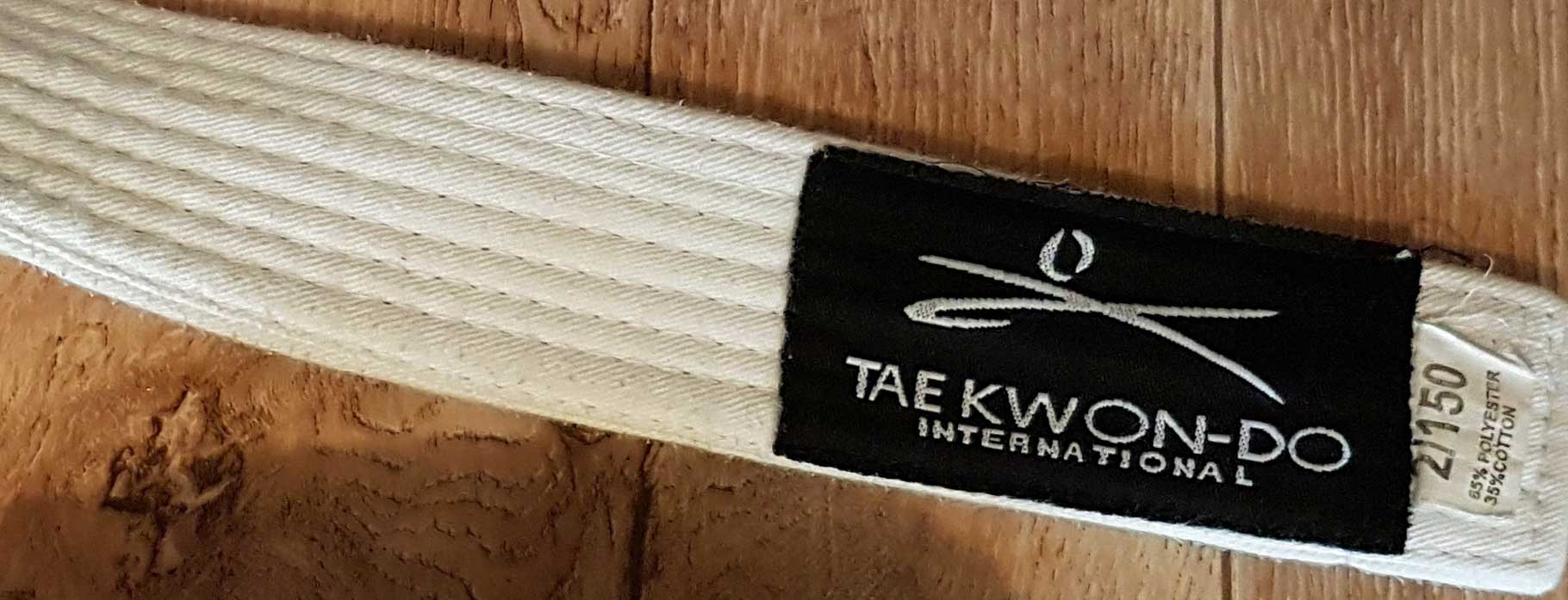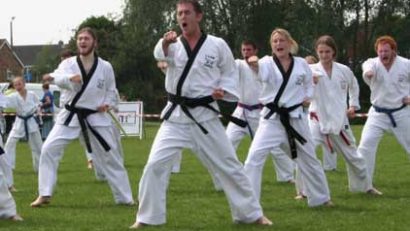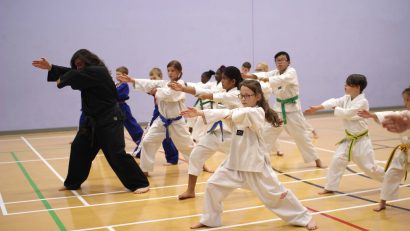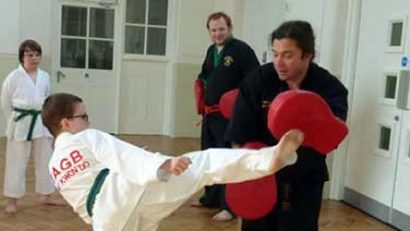All the syllabus for current white belt students to learn in order to gain their white + yellow tag belt.
Jump to: Sajo Jirugi | Theory
Beginners Techniques
Here is an introduction to the stances used by a white belt beginner – Ready (Chunbi) stance, parallel stance, sitting stance and walking stance.
An introduction now to the sitting stance punch
A quick tutorial in how to perform rising kicks
An introduction to ‘boxing’ style punching
Tenth Kup White Belt Grading Syllabus
Linework
Identify yourself – make a mental note of the number you were called to stand on, when called to identify yourself (by your number), stand to attention (charyot (heels together, toes apart) raise your right hand and clearly state your name and grade (tenth kup) – don’t forget the “Sir” or “Ma’am”!
Static linework
Sitting stance, front punch – counting to ten in Korean.
Walking ready stance, 10 front rising kicks – counting out loud in Korean – change and perform on the other side.
10 Press ups, counting out loud in Korean.
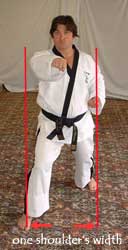
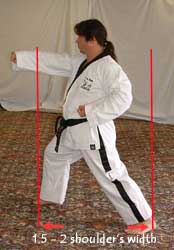
Remember: Walking stance has a weight distribution of 50/50.
Moving linework
Walking stance middle punch
Walking stance low block
Walking stance low block reverse punch
Walking stance middle block
Walking stance middle block reverse punch
Basic Exercise – Sajo Jirugi
Meaning of Sajo-Jirugi (numbers 1 & 2): Four directional punch.
Note: Sajo Jirugi is the first exercise given to all Tae Kwon-Do students to help develop co-ordination, direction changing and breath control. It is NOT counted as one of the 24 patterns.
Sajo-Jirugi has two versions, numbers one and two – see full explanations below. Sajo Jirugi has also been demonstrated by Master Martin – please see the two separate pages available from the Tenth Kup Syllabus menu, or by clicking on either of these links:
Sajo Jirugi One / Sajo Jirugi Two
Sajo Jirugi Number 1
Number of Movements: 15
Starting Position – Parallel Ready Stance
The diagram for this exercise assumes that the student is stood on line AB and is facing D.
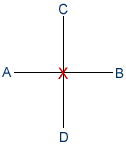
- Move the right foot to D forming a right walking stance, executing a right middle punch.
- Move the right foot to A forming a left walking stance toward B, executing a left low block.
- Move the right foot to B forming a right walking stance, executing a right middle punch.
- Move the right foot to D forming a left walking stance toward C, executing a left low block.
- Move the right foot to C forming a right walking stance, executing a right middle punch.
- Move the right foot to B forming a left walking stance toward A, executing a left low block.
- Move the right foot to A forming a right walking stance, executing a right middle punch (with kihap).
- Bring the right foot back to a parallel stance.
- Move the left foot to D forming a left walking stance, executing a left middle punch.
- Move the left foot to A forming a right walking stance toward B, executing a right low block.
- Move the left foot to B forming a left walking stance, executing a left middle punch.
- Move the left foot to D forming a right walking stance toward C, executing a right low block.
- Move the left foot to C forming a left walking stance, executing a left middle punch.
- Move the left foot to B forming a right walking stance toward A, executing a right low block.
- Move the left foot to A forming a left walking stance, executing a left middle punch (with kihap – remember to remain in this position!)
When called to return to ready stance (barro), bring the left foot back to the ready position.
Sajo Jirugi Number 2
Number of Movements: 15
Starting Position: Parallel Ready Stance
The diagram for this exercise assumes that the student is stood on line AB and is facing D.

- Move the right foot to D forming a right walking stance, executing a right middle punch.
- Move the right foot to A forming a left walking stance toward B, executing a left middle block.
- Move the right foot to B forming a right walking stance, executing a right middle punch.
- Move the right foot to D forming a left walking stance toward C, executing a left middle block.
- Move the right foot to C forming a right walking stance, executing a right middle punch.
- Move the right foot to B forming a left walking stance toward A, executing a left middle block.
- Move the right foot to A forming a right walking stance, executing a right middle punch (with kihap).
- Bring the right foot back to a parallel stance.
- Move the left foot to D forming a left walking stance, executing a left middle punch.
- Move the left foot to A forming a right walking stance toward B, executing a right middle block.
- Move the left foot to B forming a left walking stance, executing a left middle punch.
- Move the left foot to D forming a right walking stance toward C, executing a right middle block.
- Move the left foot to C forming a left walking stance, executing a left middle punch.
- Move the left foot to B forming a right walking stance toward A, executing a right middle block.
- Move the left foot to A forming a left walking stance, executing a left middle punch (with kihap).
When called to return to ready stance (barro), bring the left foot back to the ready position.
Theory
Firstly, please ready the Basic Theory and History of TaeKwon-Do page – parents, please could you go through this page with your children. We don’t expect young children to fully understand and memorise the information, but a basic understanding of the information is useful, and in some cases necessary, especially when understanding how to behave in the training hall!
At your first TaeKwon-Do grading you may be asked up to five questions. These will be from the following information:
- Identify and name the four stances you have learned? These are Attention, Parallel, Sitting and Walking stance.
- Identify and name the two punches you have learned? Obverse punch and Reverse punch.
- What does obverse and reverse punch mean? Obverse punch is performed with the same hand as the stance – so in a right walking stance it is a right punch. Reverse punch is performed with the hand opposite to the stance (this may all be demonstrated to the examiner, if that is easier than explaining!).
- What is the name of the attacking tool for a punch? This is the forefist. You should be able to point to it – if you don’t know yet where it is, ask your instructor!
- What are the names of the two blocks that you have learned? Low section outer forearm block (also known as ‘low block’ but you need to know it’s whole name!) and middle section inner forearm block (also known as ‘middle block’).
- Name and identify the blocking tools used by the two blocks? Inner forearm and outer forearm – again, make sure you know where these are and can point to them – if you’re not sure, ask your instructor.
- What does Sajo Jirugi mean? It means Four Directional Punch.
- How many movements are there in Sajo Jirugi? 15.
- What is TaeKwon-Do? TaeKwon-Do translates from Korean as ‘The Foot Fist Way’ or ‘The Way of Punching and Kicking’ is an acceptable answer!
You also need to learn (and may be questioned on) the following:-
The Meaning Of White Belt
White signifies innocence; as that of a beginning student who has no previous knowledge of Tae Kwon-Do.
Tenets of TaeKwon-Do
- Courtesy
- Integrity
- Perseverance
- Self-Control
- Indomitable Spirit
For a full explanation of the tenets please refer to the Basic Theory and History of TaeKwon-Do.
Korean Terms
Counting
1 (one) – Hanna
2 (two) – Dool
3 (three) – Seth
4 (four) – Neth
5 (five) – Dasaul
6 (six) – Yosaul
7 (seven) – Ilgop
8 (eight) – Yodoll
9 (nine) – Ahop
10 (ten) – Yoll
General Korean Terminology for TaeKwon-Do
Note: We will not test you on your knowledge of the following terms – but you will hear them used in class so it is useful to understand their meanings.
Foot-Fist-Way – Tae Kwon-Do
Attention – Charyot
Bow – Kyong Ye
Ready – Chunbi
Start – Si-jak
Stop – Goman
Return to ready stance – Barro
Dismiss – Haessan
About turn – Dwiyro Torro
TaeKwon-Do Uniform – Dobok
Break/Move apart (used especially in sparring) – Hechyo
Training Hall – Dojang

